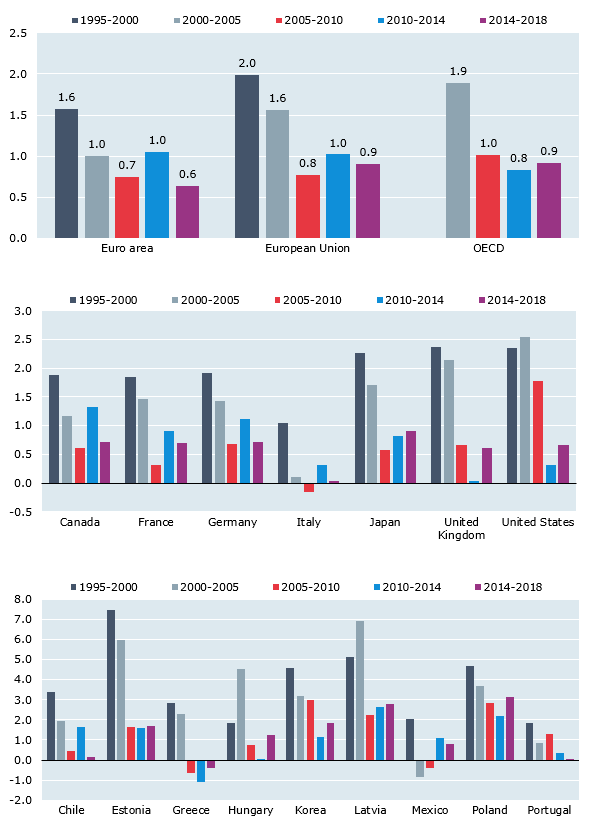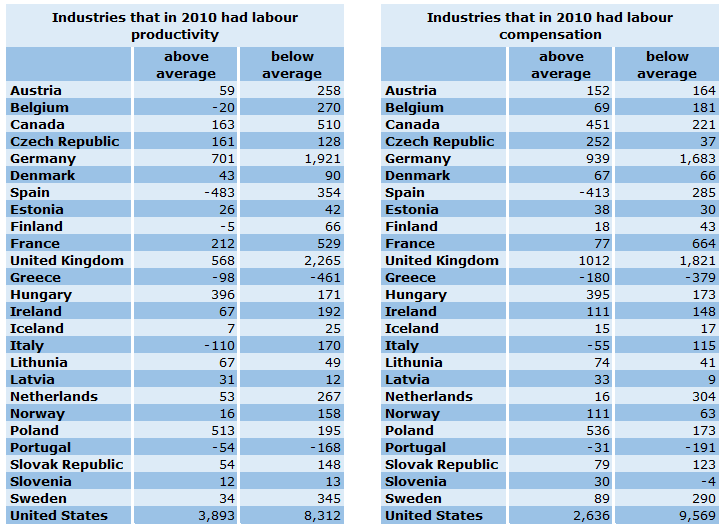
OECD Compendium of Productivity Indicators 2024
Published on February 29, 2024
TABLE OF CONTENTS
| Reader’s guide | |
| Overview | |
| Insights on productivity developments in 2023 | |
| Cross-country comparisons of labour productivity levels | |
| Productivity and economic growth | |
| Industry contributions to aggregate labour productivity growth | |
| Productivity in SMEs and large firms | |
| Investment | |
| Labour income and productivity |
HIGHLIGHTS
- Press release: Low productivity jobs continue to drive employment growth (French)
Employment is at historic highs but productivity growth remains weak
Labour productivity growth in the OECD area remains weak and well below pre-crisis rates. Since 2010, annual growth in labour productivity has slowed to 0.9%, about half the rate recorded in the 2000-2005 pre-crisis period. Post-crisis labour productivity growth has also slowed in countries with relatively low labour productivity levels, such as Chile, Estonia, Korea and Portugal, undermining the pace of convergence towards higher labour productivity levels.
Labour productivity growth in the OECD
GDP per hour worked, percentage rate at annual rate
Download graph and data in Excel
Compounding the impact of weak productivity growth on material well-being, is the fact that in the majority of OECD economies most jobs have been created in lower labour productivity activities, weighing down on overall labour productivity levels. Since labour compensation typically correlates highly with labour productivity, more jobs in low productivity activities has also meant more jobs with below average wages, hindering growth in average salaries in a country’s economy as a whole.
Change in employment over the period 2010-2017
Thousands of persons
GET REAL TIME DATA
The OECD Productivity Statistics database contains more and longer time series than presented in the publication. Data are available from 1970 onwards for some countries. The database is updated on a daily basis.
- GDP per capita and productivity levels
- Labour productivity growth
- Growth in labour input
- Growth in capital input
- Capital productivity
- Multifactor productivity
- Contributions to GDP growth
- Contributions to labour productivity growth
- Unit labour costs
- Productivity and unit labour costs by industry
FURTHER INFORMATION
CONTACT
For further information, please contact the OECD Statistics and Data Directorate at stat.contact@oecd.org.



